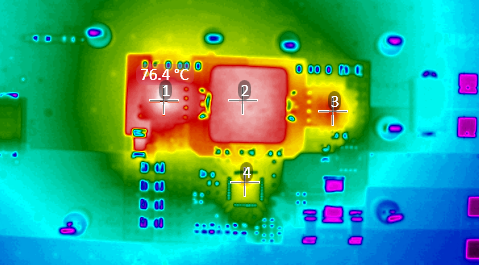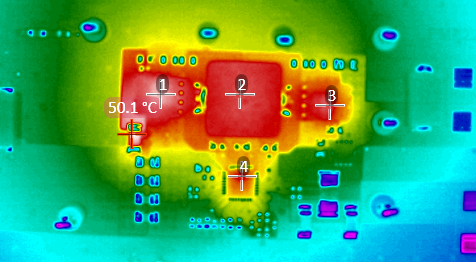TIDT341 july 2023
2.3 Thermal Images
The PMP22419 design was tested with a 4S battery at room temperature and natural convection as shown in the following figures.
Figure 2-2 shows test results at 20 VIN, 12 VBAT, 130 W, 800 kHz.

Q1 FET temperature = 76.4°C, IND temperature =
74.3°C
Q4 FET temperature = 66.8°C, IC temperature = 63.4°C
Figure 2-2 Thermal Image (20
VIN, 12 VBAT, 130 W)Q4 FET temperature = 66.8°C, IC temperature = 63.4°C
Figure 3-12 shows test results at 20 VIN, 18 VBAT, 130 W, 800 kHz.

Q1 FET temperature = 48.6°C, IND temperature = 46.8°C
Q4 FET temperature = 46.3°C, IC temperature = 45.8°C
Figure 2-3 Thermal Image (20
VIN, 18 VBAT, 130 W)Q4 FET temperature = 46.3°C, IC temperature = 45.8°C